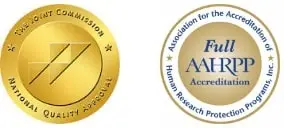STRUCTURAL HEART DISEASE
Structural heart disease includes a bunch of illness/condition that are associated with Heart’s valve, chambers, or walls. These conditions can be innate for example from birth or may arise primarily as a result of valve dysfunction or maybe secondary to heart dysfunction. Structural heart intervention pertains to correction or management of such conditions without open/minimally invasive surgery by means of Transcatheter intervention.
DIAGNOSIS
Echocardiography is a widely available investigation that forms the basis of diagnosis structural heart disease. A good Echocardiogram does not only diagnosed the problem but also is important in deciding about the urgency and strategy of treatment.
ECG is a baseline investigation that gives an idea of coronary artery disease and arrhythmia if occurring. It has importance in further planning and prognostication of likely adverse outcomes.
Stress test (Exercise TMT/Echocardiography/DSE). It is sometimes needed for assessment of severity of dysfunction particularly of Aortic Valve Stenosis.
CT Angiogram – It is the most important investigation, while planning for structural heart intervention. The coronary angiogram can be assessed simultaneously to rule out/rule in coronary artery disease. The CT Angiogram gives a detailed picture of the defect. It gives an idea about the ideal device/size of device to be used. Since it being a transcatheter intervention. A good access site for passing catheter is a must for successful procedure. In this regard CT Angiogram proves useful to decide about the ideal assess (Artery Vein). In fact, every aspect of the procedure is planned in detail based on the CT Angiogram analysis. These are special software (like 3 – mensio) which come handy.
INDICATION
Indications of Structural Heart intervention is a hotly debated topic worldwide. Pre-diabetic structural heart intervention like ASD, VSD, PDA closure or balloon dilation for correlation of aorta, congenital aortic stenosis or pulmonary stenosis have been a standard of care for long period. But structural heart intervention in adults have been limited to mitral stenosis (PTMC) or congenital heart disease manifesting later. But over the last 20 years with research innervation and research now adult intervention have become are now frontier in medical intervention. This treatment was first used in high or prohibition risk patient in whom a conventional open-heart surgery was not possible. But over the last 2-3 years with research showing the safety and consistency of these now interventions, now in some selected group of patients they may be considered as an alternative to open heart surgery.
STRUCTURAL HEART INTERVENTION
TAVR (Transcatheter Aortic Valve Replacement)
Transaortic Valve Implantation TAVI or Transaortic Valve Replacement (TAVR) is a minimally invasive interventional procedure for the treatment of aortic stenosis. Aortic stenosis is narrowing of the aortic valve. Aortic valve is 1/4 (one out of four) valves in the heart. A valve is nothing but similar to a door between two chambers. With age, these valves become degenerative and their valve opening starts to reduce, leading to narrowing of the valve.
The symptoms of aortic stenosis can range from dyspnoea or breathlessness, angina or chest pain and syncope. Once the patient starts developing these symptoms of Dyspnoea, angina and syncope, it attributes to the fact that the valve is severely stenosed and needs an urgent replacement. In a patient of severe aortic stenosis, TAVI or TAVR can be performed through the Femoral or / leg approach, where the valve is replaced through the artery in the leg and this opening in the artery is then closed by a small stitch.
TAVI or TAVR prevents an open-heart surgery for the same valve replacement. Thus, patients who have undergone previous open-heart surgeries either for coronary artery disease (triple vessel disease) or for any valve replacement (mitral/aortic) and thus are unfit to undergo a redo open heart surgery, TAVR/TAVI offers a good alternative. Also, patients in whom any other reasons for not being able to perform an open-heart surgery like any old cancer patients who have undergone radiation or frail old patients TAVI or TAVR can be performed. TAVR / TAVI offers an approach due to which the risks of an open-heart surgery can be reduced to minimal and the valves can also be replaced providing adequate medical management to the patient.
Once the patient has been diagnosed with severe aortic stenosis, after a detailed echocardiography, the patient can be considered for TAVI/TAVR. Prior to the procedure the patient undergoes adequate lab investigations and a CPR program which helps us decide the size and the type of valve.
A heart team meeting which includes an Interventional Cardiologist, a Cardiothoracic Surgeon, Cardiac anaesthetics and all Cath lab technician is held to decide the steps of the procedure, the valve, the size of the valve and the post-operative care.
The valve is passed through the leg or the femoral artery right into the aorta and from the aorta in through the aortic valve, it is done placed that the aortic valve over the existing native valve. Once this procedure is done the small opening in the femoral artery is closed by small stitch and the patient is shifted to an intensive cardiac unit. The patient’s stay in Intensive Care units for a day or two and is mobilized as soon as possible. The benefits of this procedure are not only short Hospital stay, faster mobilization but also the patient does not need to take any blood thinners (Anti coagulants) for the same on a long-term basis. Considering the various benefits, TAVR or TAVI has become one of the most important cardiac procedures in patients who are not fit to undergo open heart surgery.
TMVR (Transcatheter Mitral Valve Replacement)
- As per the technology available, it can be done only over at degenerated previously implanted prosthetic mitral valve or a mitral ring having severe mitral regurgitation.
- The advantage is it save the patient from repeat open heart surgery.
- The procedure is down under short general anaesthesia and with transoesophageal echocardiography guidance.
MITRAL CLIP IMPLANTATION
- It is transcatheter implantation of clips over the mitral valve which is leaking.
- It is indicated in severe mitral regurgitation patient who are a high risk for open heart surgery.
TRICUSPID VALVE INTERVENTION
- Mitral clip can be used to treat severe tricuspid regurgitation.
- In a previously implanted bioprosthetic tricuspid valve with dysfunction a transcatheter valve (TAVR. BEV) can be implanted to correct tricuspid valve dysfunction.
- A Bicaval TRIC valve system is also available for indicated patient of severe TR.
PULMONARY VALVE INTERVENTION
- Pulmonary regurgitation happen in a previously surgical treated patient of cyanotic congenital heart disease.
- It is now possible to treat severe pulmonary regurgitation with an implantation of transcatheter heart valve.
LEFT ARTERIAL APPENDAGE CLOSURE DEVICE
- Patient of non-vulvar AF have a high risk of stroke (ischemic).
- In most of these cases it is a cardioembolic stroke. The clot is a formed in left arterial appendage is discharged and goes into cerebral circulation resulting in ischemic stroke.
- So such patients need lifetime oral anticoagulation in form of Vitamin K antagonist (warfarin) or Novel oral anticoagulants.
- Because of oral anticoagulant sometimes these patients may have serious bleeding episode.
- LAA closure can be done in such patient as an alternative to need for oral anticoagulation.


